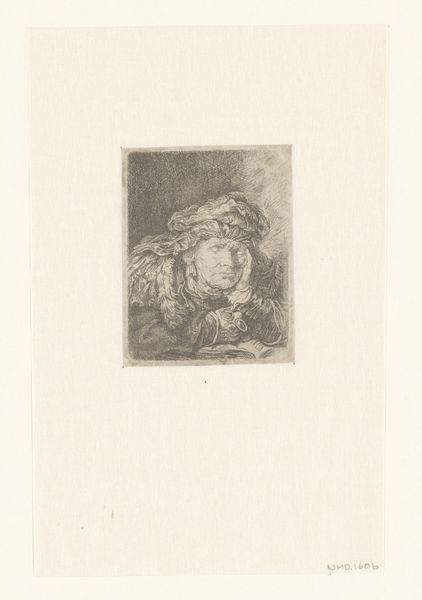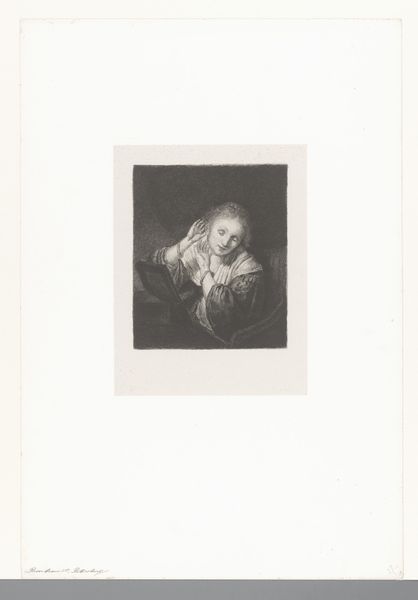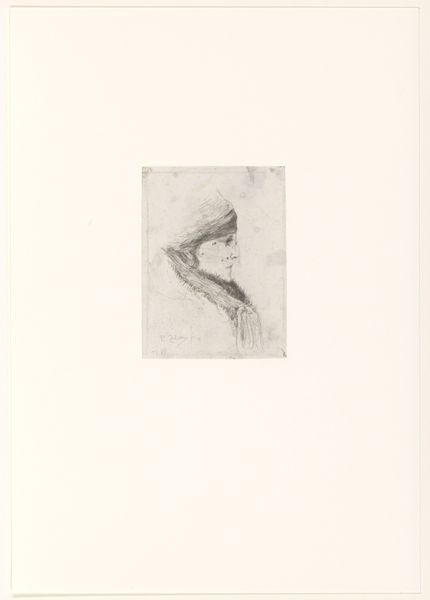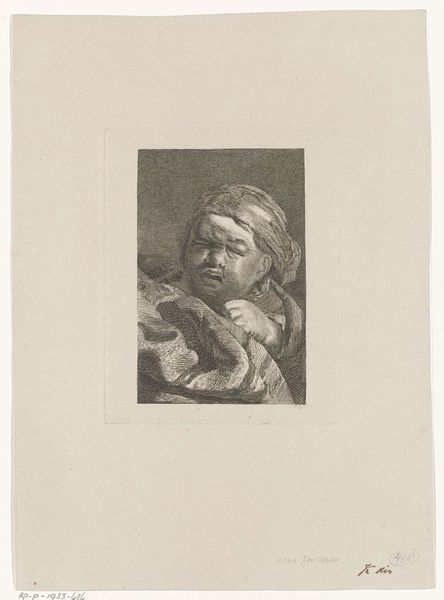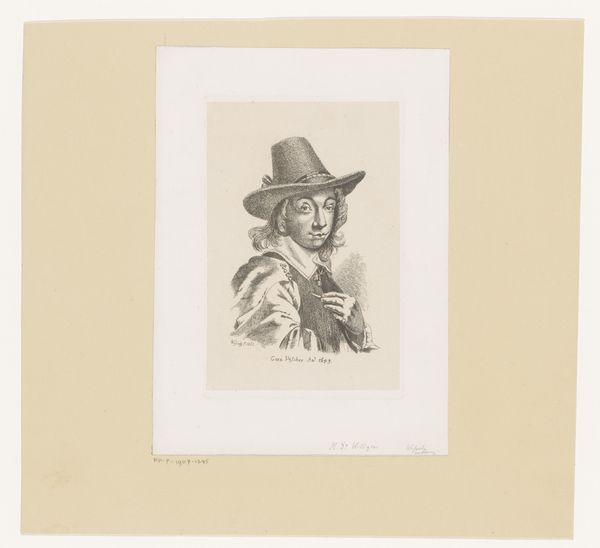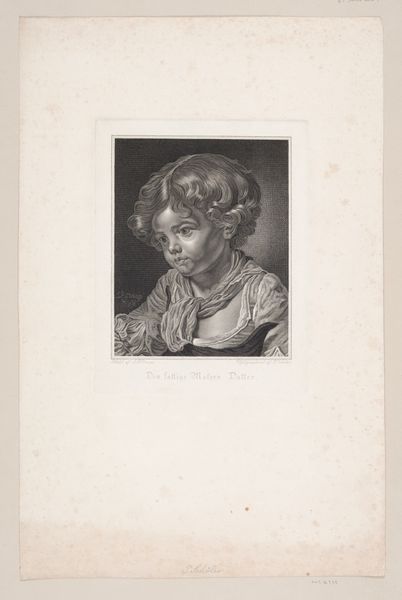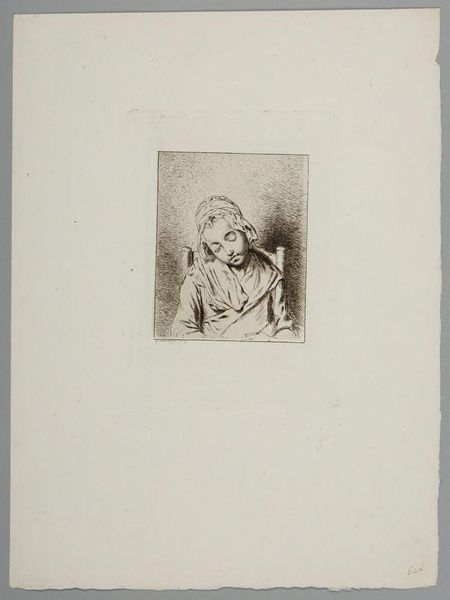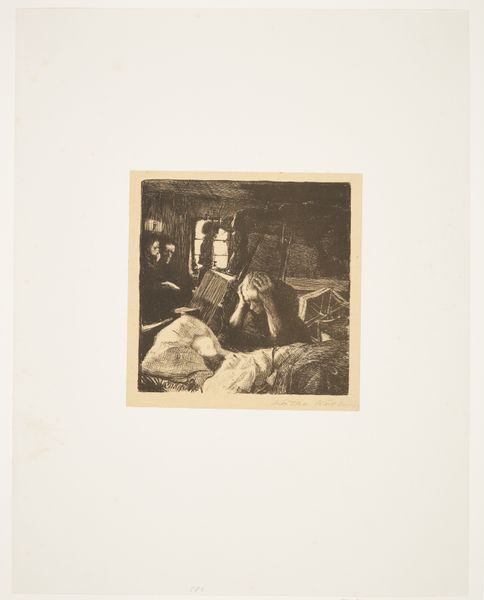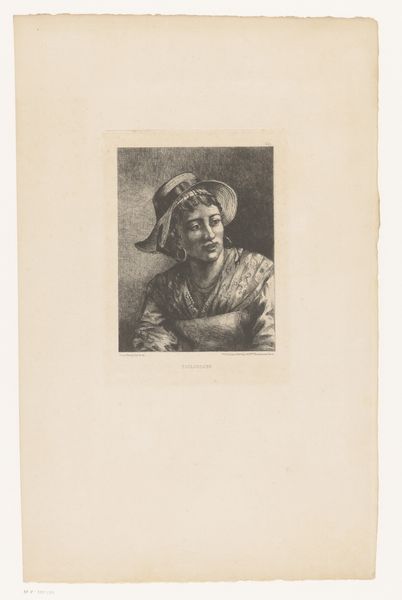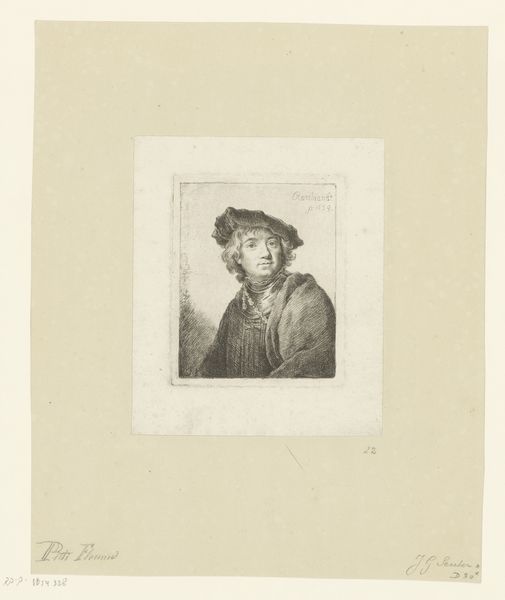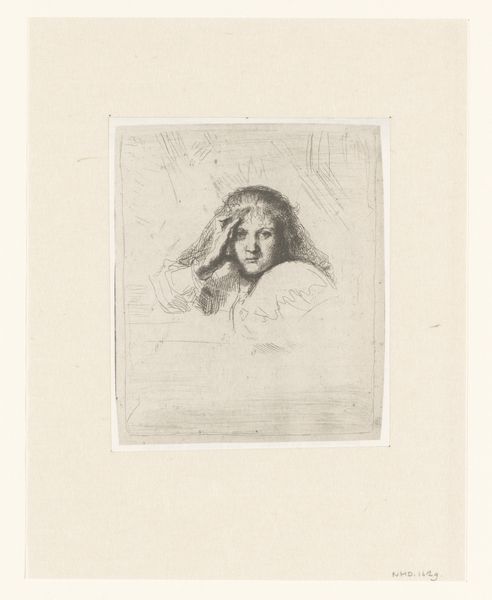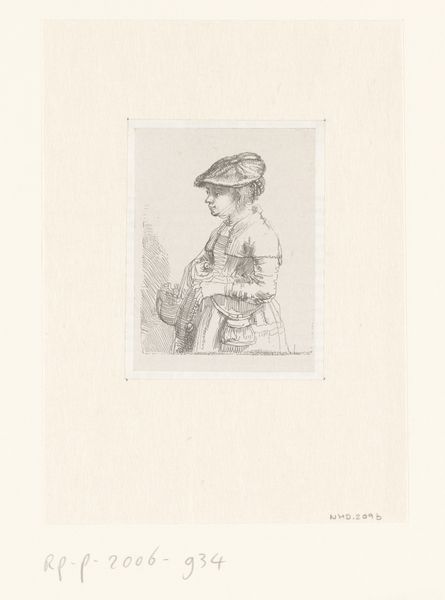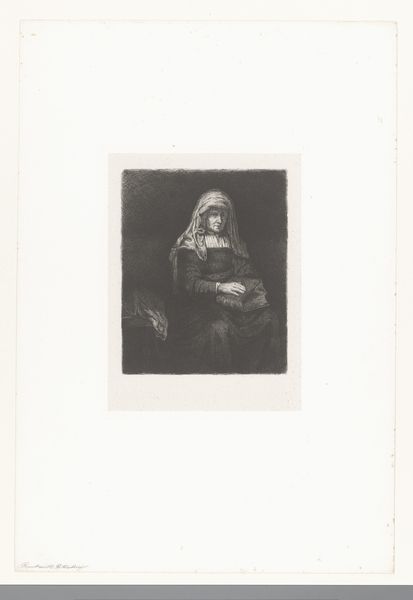
print, etching
#
portrait
# print
#
etching
#
genre-painting
#
realism
Dimensions: height 87 mm, width 65 mm
Copyright: Rijks Museum: Open Domain
Editor: Here we have Antoine Alphée Piaud’s “Old Woman Sleeping,” an etching from 1859. I find it very poignant; she seems to embody exhaustion and maybe even a quiet resistance. What's your interpretation of the piece? Curator: Considering the historical context, it’s less about personal emotion and more about social observation. Genre paintings and portraits like these often served as records of a society's understanding, even idealization, of certain classes and roles. The “Old Woman Sleeping” captures an individual, but it also tells a story of aging and potentially, the role of women and the poor in 19th century French society. Editor: That's interesting! So you're saying it's not just a simple depiction of sleep, but something more? Curator: Precisely. Etchings and prints democratized art, making it more accessible. So, think about the intended audience and what the artist might be trying to say to them. Is this image intended to evoke pity, respect, or something else? How do her clothes, the book under her arm, inform our understanding? Editor: The fur hat does look pretty fancy, a sharp contrast to her worn face. I'd assumed poverty, but the fur seems contradictory. Maybe Piaud is aiming for a complex portrayal? Curator: The contradiction might be the very point. Consider the debates surrounding poverty and social welfare at that time. Realist artists were keen to represent society as it was, complex and unflinching, thereby inciting the middle class to reflect on wealth distribution. What role might galleries play in showcasing works like these? Editor: So, maybe this print challenged the viewer's perception, leading them to question their own place in the social order. Thank you, I’ve never considered the role of political undertones of something as "simple" as this scene. Curator: Precisely, understanding how art is presented, consumed, and debated within a society opens a far richer understanding of art history.
Comments
No comments
Be the first to comment and join the conversation on the ultimate creative platform.
